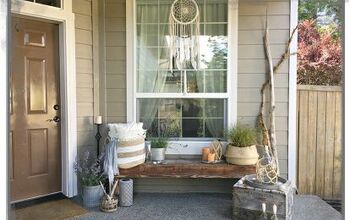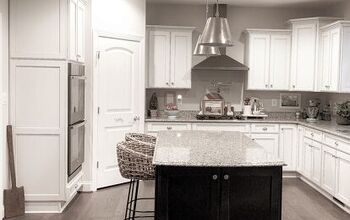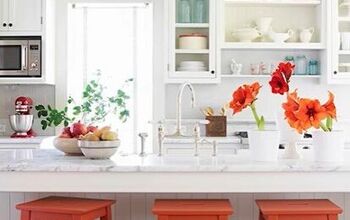What Makes Good Design Good? Unpacking Dieter Rams' 10 Principles

Have you ever wondered what makes a design truly good? We can often spot bad design a mile away, but is there a way to objectively evaluate good design?
Dieter Rams, a German industrial designer and former architect, wrestled with this question in the late 1970s. Dismayed by the overwhelming complexity of forms, colors, and noises in the world, he began to question if his own work was contributing positively.
This led him to formulate his now famous "10 Principles of Good Design" and the approach of "less, but better" (Weniger, aber besser). Let's delve into each principle and see how it contributes to creating a well-designed space.
Table of contents
- Principle 1: Good Design is Innovative
- Principle 2: Good Design Makes a Product Useful
- Principle 3: Good Design is Aesthetic
- Principle 4: Good Design Makes a Product Understandable
- Principle 5: Good Design is Unobtrusive
- Principle 6: Good Design is Honest
- Principle 7: Good Design is Long-lasting
- Principle 8: Good Design is Thorough Down to the Last Detail
- Principle 9: Good Design is Environmentally Friendly
- Principle 10: Good Design is As Little Design As Possible
- Conclusion
Principle 1: Good Design is Innovative
Innovation in residential design can take many forms. It can involve using new materials or construction methods, incorporating sustainable features, or integrating cutting-edge technology.
However, while innovation can be a plus, it's not essential for good design. A home that isn't particularly innovative can still be excellent as long as it excels in the other nine principles.
Principle 2: Good Design Makes a Product Useful
A house, after all, is meant to be lived in, not admired from afar like a piece of art.
A well-designed home should function seamlessly to enhance your daily life, not create unnecessary challenges.
Imagine a bathroom door that requires modification just to open – that's not clever design, it's bad design.
Principle 3: Good Design is Aesthetic
The visual impact of our homes can significantly affect our well-being.
I champion that simple and minimal spaces bring a sense of calm and peace, and allow space to breathe. But I acknowledge that what I find beautiful may be different to you.
So it's integral for your home to be beautiful in your eyes because you want to open your front door, walk in, and smile.
Principle 4: Good Design Makes a Product Understandable
An intuitive home speaks for itself, but this principle is more applicable to the products we use within the home – taps, appliances, light fixtures, etc.
These elements shouldn't require an engineering degree to operate.
Principle 5: Good Design is Unobtrusive
Your home should be a backdrop for your life, not a constant obstacle.
Minimalist design excels in this area, creating a clean canvas for you to enjoy your living space.
Good design doesn't demand attention; it simply exists for you to use and appreciate.
Principle 6: Good Design is Honest
Honesty in design means using materials authentically. If you love timber cladding, use real timber.
Don't try to convince yourself or others that faux alternatives are just as good.
Embrace the inherent qualities of the materials you choose.
Principle 7: Good Design is Long-lasting
Trends come and go, but good design is timeless. Minimalist design, when done well, incorporates natural light and ventilation, clean lines, soft colors, natural textures, and simple furnishings.
This creates a classic interior that transcends fleeting trends. Homes should also be built to last using high-quality materials and craftsmanship.
A home that needs demolition after 20 years due to poor construction is not good design.
Principle 8: Good Design is Thorough Down to the Last Detail
As Mies van der Rohe famously said, "God is in the details." When meticulous attention is paid to details, it significantly impacts how a space functions and feels.
Carefully considered details – how lines align, light fixture placement, material transitions, and the flow of light throughout the day – all contribute to a well-designed space.
Principle 9: Good Design is Environmentally Friendly
Sustainability is a major factor in good design. A well-designed home incorporates measures to minimize its environmental impact.
This could range from basic features like proper orientation and cross-ventilation to a fully off-grid home built with reclaimed materials.
Principle 10: Good Design is As Little Design As Possible
This principle aligns closely with minimalism. Simplicity allows us room to breathe. By eliminating clutter and unnecessary details, we can focus on what truly matters.
If you have a cherished piece of art, highlight it with negative space to draw attention to it. Too much clutter around it will diminish its impact.
Conclusion
There's a clear connection between Dieter Rams' 10 principles and minimalism. While minimalism may not be for everyone, there's value in these principles for any design project, whether it's a lamp, a chair, or an entire home.
By applying these principles, we can create designs that are not just functional and beautiful, but also timeless and respectful of the environment. In the end, this is what makes good design truly good.
"Indifference towards people and the reality in which they live is actually the one and only cardinal sin in design." - Dieter Rams


















































Comments
Join the conversation